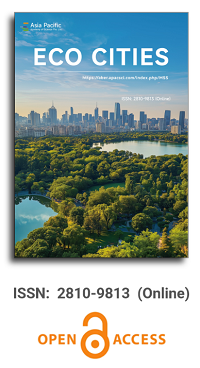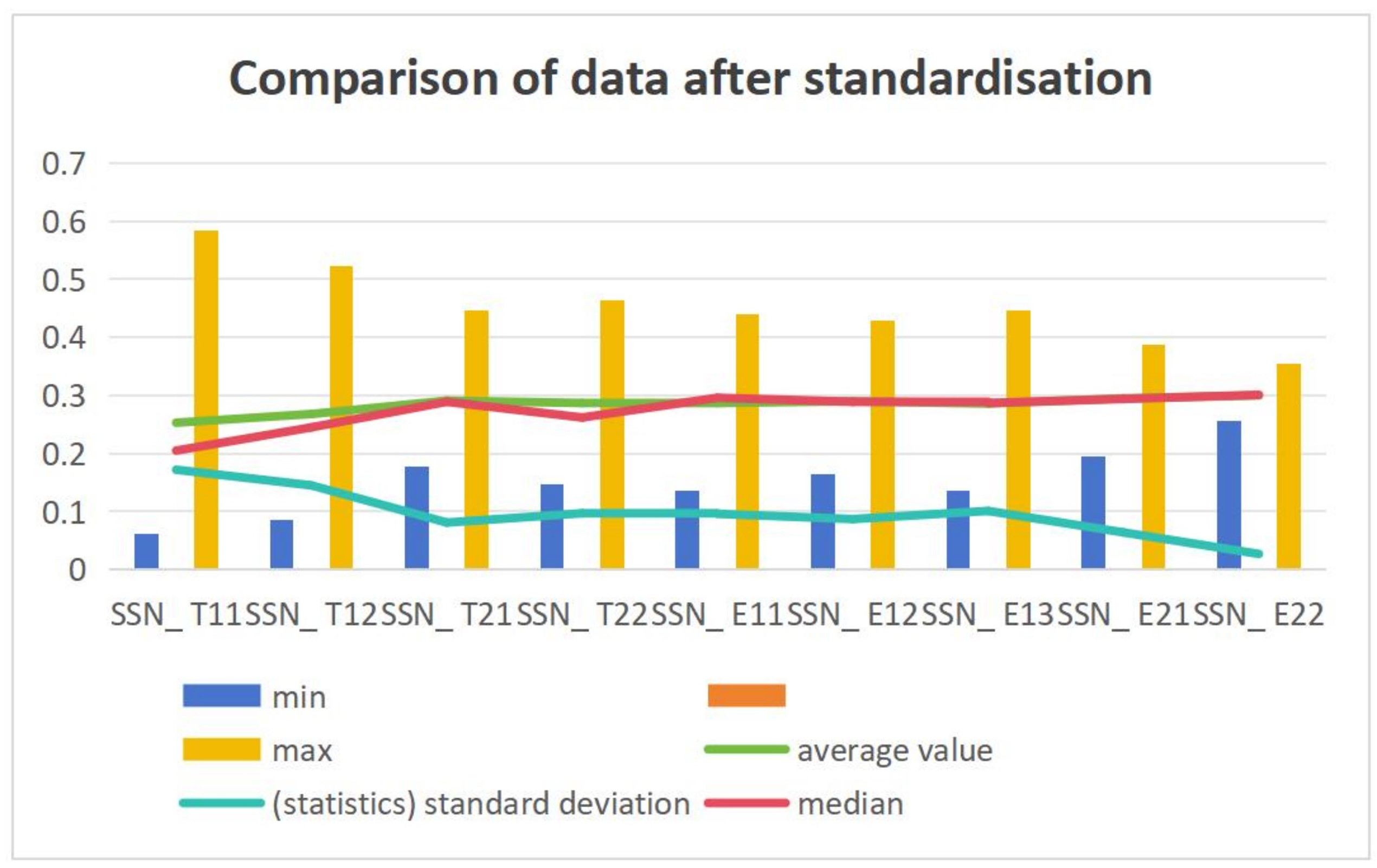


Sustainable micro renewal and renovation of arts town in China: Intermingling design of contemporary art and Chinese classical garden
Vol 5, Issue 2, 2024
Download PDF
Abstract
The gardening philosophy of Chinese classical gardens is an integral part of China’s rich traditional culture, reflecting ancient scholars’ understanding of nature and humanity and embodying aesthetic and philosophical values. With the progression of time, integrating the principles of Chinese classical garden gardening into contemporary space design has emerged as a critical issue in contemporary public space design. This study uses the Butong Arts Town in Qinhuangdao as a case study, focusing on applying Chinese classical garden gardening concepts in public space design and regional micro-renovation. Special attention is given to nodes that simultaneously serve interactive and recreational functions. In the micro-renovation of the Butong Arts Town area, Chinese classical garden gardening principles can be employed through greening, landscaping, and other means to enhance the quality of the space. Additionally, by integrating local cultural characteristics, it is possible to create public spaces with distinct regional features, providing a comfortable and pleasant environment for artists, designers, planners, and tourists. The design methods used in this study explore the behavioral characteristics and usage needs of various groups from multiple perspectives, aiming to optimize activity spaces. This research identifies the main issues within the target areas and proposes corresponding improvement measures to enhance the functionality and aesthetic quality of the space. The aim is to integrate people’s growing spiritual pursuits with public activity spaces, providing new references and ideas for future sustainable space design.
References
- Wikimedia. Arts town (Chinese). Available online: https://en.wikipedia.org/wiki/Arts_town (accessed on 7 July 2024).
- Wang J. ‘Art in capital’: Shaping distinctiveness in a culture-led urban regeneration project in Red Town, Shanghai. Cities. 2009; 26(6): 318-330. doi: 10.1016/j.cities.2009.08.002
- Zebracki M. Regenerating a coastal town through art: Dismaland and the limitations of antagonistic art practice in the city. Cities. 2018; 77: 21-32. doi: 10.1016/j.cities.2017.04.015
- Crisman JJ. Evaluating values in creative placemaking: The arts as community development in the NEA’s Our Town program. Journal of Urban Affairs. 2021; 44(4-5): 708-726. doi: 10.1080/07352166.2021.1890607
- Anwar-McHenry J, Carmichael A, McHenry MP. The social impact of a regional community contemporary dance program in rural and remote Western Australia. Journal of Rural Studies. 2018; 63: 240-250. doi: 10.1016/j.jrurstud.2017.06.011
- Xinhua Net. “Preserving” Traditional Culture: New Domestic Products Gain Popularity Among Post-00s (Chinese). Available online: http://www.xinhuanet.com/fashion/20211008/aa4fede1ebea43b2a3629f260b62c0b3/c.html (accessed on 6 June 2024).
- People’s Daily Online. Shibanyan Township, Linzhou, Anyang: A Treasure Place in Taihang Mountains (Chinese). Available online: http://henan.people.com.cn/n2/2022/1024/c378397-40168070.html (accessed on 6 July 2024).
- Hangzhou Daily. Yichuang Town: Building the No.1 Cultural Industry Town in Zhejiang Province (Chinese). Available online: https://mdaily.hangzhou.com.cn/hzrb/2022/10/14/article_detail_1_20221014E1011.html (accessed on 6 June 2024).
- Souhu. Case Analysis: Yufuin Hot Spring Town, Japan (Chinese). Available online: https://www.sohu.com/a/389208417_120046640 (accessed on 7 July 2024).
- IHCHINA. Kaustinen folk string music and related customs and expressions (Chinese). Available online: https://www.ihchina.cn/art/detail/id/26032.html (accessed on 7 July 2024).
- Zhang X. Application of Chinese Traditional Gardening Techniques in Modern Landscape Design—Model Case Study of Xi’an Tang Daming Palace National Heritage Park (Chinese) [Master’s thesis]. Xi’an University of Architecture and Technology; 2012.
- Duan S. A Brief Analysis of the Relationship between Chinese Classical Gardens and Modern Gardens (Chinese). Xiandai Horticulture. 2020; 21: 161-162. doi: 10.14051/j.cnki.xdyy.2020.21.072
- American Planning Association. Arts, Culture & Creativity. Available online: https://www.planning.org/research/arts/ (accessed on 7 July 2024).
- Li M. Explore the application of classical garden design techniques in modern residential landscape design (Chinese). Journal of Beijing Institute of Graphic Communication. 2021; 29(7): 87-89. doi: 10.19461/j.cnki.1004-8626.2021.07.023
- Lin J. Research on the application of Chinese classical garden design in contemporary landscape design. Green Environmental Protection Building Materials. 2020; 11: 175-176. doi: 10.16767/j.cnki.10-1213/tu.2020.011.085
- Xu X, Zhao H. (2020). Analysis on the “Scenery Borrowing Design” in Gardens -Taking Traditional Chinese Gardens for Example (Chinese). Traditional Chinese Architectrue and Gardens. 2020; 146: 11-14.
- Zhang X. Brief Discussion on the Application of Chinese Garden Artistic Conception in Modern Urban Landscape Design (Chinese). Construction & Design for Engineering. 2017; 21: 133-134. doi: 10.13616/j.cnki.gcjsysj.2017.11.037
- Chu F. Discussion on convergence of Chinese landscape artistic conception and modern garden landscape (Chinese). Shanxi Architecture. 2012; (2): 213-214. doi: 10.13719/j.cnki.cn14-1279/tu.2012.02.086
- Tan J, Wang J. Discussion on the Integration of Chinese Traditional Garden Landscape with Modern Gardening (Chinese). Chinese and Overseas Architecture. 2010; 11: 88-90.
- Xu J, Wu D, Wang H, et al. Introducing Sustainable Intervention Strategies of Operation Planning and Environment Design to Activate Void Areas on the Urban Fringe. E3S Web of Conferences. 2023; 437: 03002. doi: 10.1051/e3sconf/202343703002
- Willey DS. Approaches to computer-aided architectural sketch design. Computer-Aided Design. 1976; 8(3): 181-186. doi: 10.1016/0010-4485(76)90032-4
- Ban S, Hyun KH. 3D Computational Sketch Synthesis Framework: Assisting Design Exploration Through Generating Variations of User Input Sketch and Interactive 3D Model Reconstruction. Computer-Aided Design. 2020; 120: 102789. doi: 10.1016/j.cad.2019.102789
- Feibush E, Greenberg DP. Texture rendering system for architectural design. Computer-Aided Design. 1980; 12(2): 67-71. doi: 10.1016/0010-4485(80)90446-7
- Yin C, Zhao W. Addressing climate, ecological and environmental crises to promote sustainable development—A brief summary of the UNEP report “Making Peace with Nature” (Chinese). Acta Ecologica Sinica. 2021; 41(23): 9536-9542. http://doi.org/10.5846/stxb202103070620
- Central People’s Government of the People’s Republic of China. Let green mountains and clear waters benefit the people and benefit future generations—A review of General Secretary Xi Jinping’s important remarks on ecological civilization construction. Available online: https://www.gov.cn/xinwen/2021-06/03/content_5615092.htm (accessed on 6 June 2024).
- Liang M, Wang Q. The Chinese ancient landscape gardening thought that implicate to the modern gardens design (Chinese). Journal of Shandong Forestry Science and Technology. 2009; 2: 114-117. doi: 10.3969/j.issn.1002-2724.2009.02.035
- Guangming Ribao. Application of green design concepts in environmental art design (Chinese). Available online: https://reader.gmw.cn/2023-05/31/content_36600959.htm (accessed on 6 June 2024).
- Cui J. The Integration of Chinese Classical Garden Art in the Modern Public Building Courtyard Space Design Research (Chinese) [Master’s thesis]. Anhui Jianzhu University; 2012.
- Zang X, Wang Q. Strategies of Green Blocks Urban Design Based on the Idea of Landscape Ecology (Chinese). Landscape Architecture. 2017; 4: 21-27. doi: 10.14085/j.fjyl.2017.04.0021.07
- Gan D. Discussion on the integration of tradition and modernity in garden design (Chinese). Agricultural Science. 2019; 2(4): 17-18. doi: 10.32629/as.v2i4.1619
- Purnell D. Expanding Oldenburg: homes as third places. Journal of Place Management and Development. 2015; 8(1): 51-62. doi: 10.1108/jpmd-03-2014-0006
- Yuen F, Johnson AJ. Leisure Spaces, Community, and Third Places. Leisure Sciences. 2016; 39(3): 295-303. doi: 10.1080/01490400.2016.1165638
- Mimoun L, Gruen A. Customer Work Practices and the Productive Third Place. Journal of Service Research. 2021; 24(4): 563-581. doi: 10.1177/10946705211014278
- Wang Y, Wang S. Study on Traditional Scenery Pattern of Curved Brook for Drinking and Poetry: In the Perspective of Text Research of Si Bu Cong Kan (Chinese). Landscape Architecture. 2019; 7: 113-117. http://doi.org/10.14085/j.fjyl.2019.07.0113.05
- Landscape China. A brief analysis of the design and application concepts of plant landscape (Chinese). Available online: http://www.landscape.cn/article/64600.html (accessed on 6 June 2024).
Supporting Agencies
Copyright (c) 2024 Chenhe Zhang, Jianru Li, Wanying Liao, Jiajun Xu
License URL: https://creativecommons.org/licenses/by/4.0/

This site is licensed under a Creative Commons Attribution 4.0 International License (CC BY 4.0).

Chinese Academy of Sciences, China
Indexing & Archiving
Asia Pacific Academy of Science Pte. Ltd. (APACSCI) specializes in international journal publishing. APACSCI adopts the open access publishing model and provides an important communication bridge for academic groups whose interest fields include engineering, technology, medicine, computer, mathematics, agriculture and forestry, and environment.



.jpg)

.jpg)



